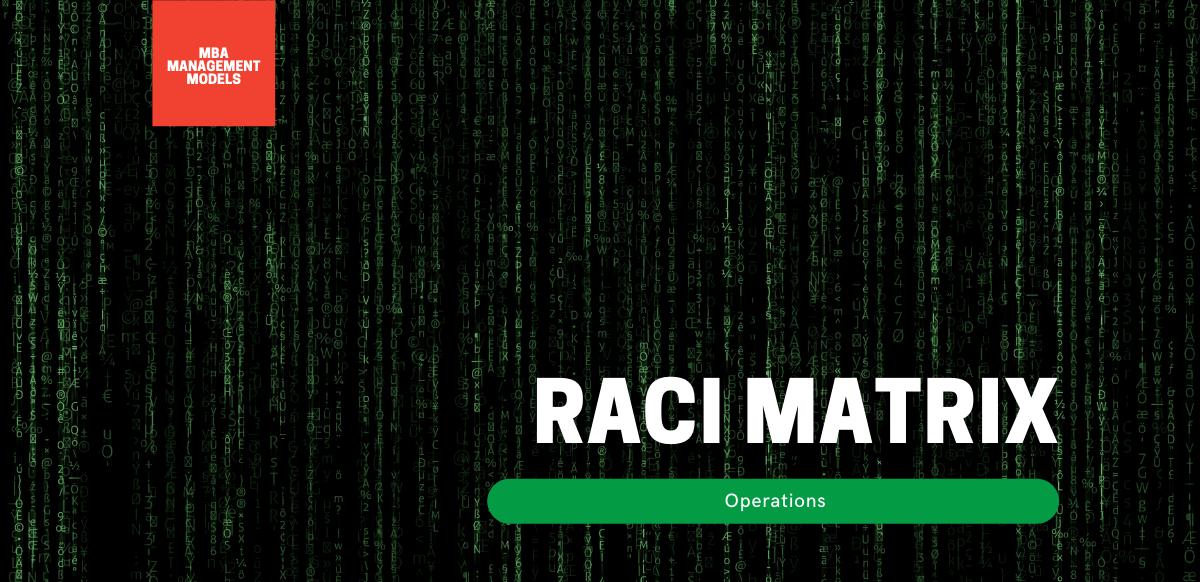RACI Matrix
A RACI Matrix is a simple way to chart roles and responsibilities in a project. A RACI Matrix establishes who will be Responsible, Accountable, Consulted, or Informed for the tasks, milestones, and decisions anticipated during the project.

What it is
The RACI Matrix (sometimes referred to as a RACI Chart) is a type of Responsibility Assignment Matrix (RAM) used to aid delegation as a part of project management. Clarifying roles and responsibilities in a cross-functional or departmental project can help avoid missed items, set stakeholders' expectations, and ensure all interested parties are involved at the appropriate time throughout.
The acronym RACI stands for:
Responsible - The person responsible for performing the work to accomplish the activity. Each activity must have at least one responsible person, although some or all of the work may be delegated to others.
Accountable - This is the person who is accountable for the correct and thorough completion of the activity. This person ensures that the prerequisites are met and that the work is appropriately delegated to the person responsible. There must be only one accountable person for each activity in the RACI Matrix.
Consulted - These are the people, often subject matter experts, whose opinions are to be sought for specific activities and with whom there is two-way communication.
Informed - These are the people to be kept informed of progress, often only on completion or delay of an activity, and with whom there is one-way communication.
Background
The RACI Matrix was first introduced in the 1950s. It was initially called the "Decision Rights Matrix" and has also been referred to as the "Responsibility Chart".
When to use it
- To establish roles and responsibilities at the outset of a project.
- To set expectations with all stakeholders.
- When decision-making or approval processes are causing conflict or delay.
- To ensure project workload is distributed evenly across the team.
- To onboard someone quickly to a new role.
How to use it
To prepare a RACI Matrix, first identify all the tasks, milestones, and decisions anticipated throughout the project. List these in the left-hand column of the chart.

Add columns for each stakeholder and specify their role within the activity, ensuring that every activity has precisely one person who is accountable for its successful completion and at least one person responsible.
Look out for overloaded team members. If one person is responsible for too many activities, they may become a bottleneck (see Theory of Constraints).
Once the RACI Matrix is complete, share it with all the identified stakeholders to ensure everyone agrees with and acknowledges their role in all the project activities.
Frequently asked questions (FAQs)
How many people should be consulted on each activity?
There is no set upper or lower limit for the number of people to be consulted or informed of any activity. However, you should try to limit the number of people to be consulted as this may have an impact on the time taken to complete the activity.
Can the same person be Responsible and Accountable?
It is perfectly acceptable for the same person to be both Responsible and Accountable for any given activity, particularly for more minor activities. By convention, it is assumed that for any row that does not have a Responsible person identified, the Accountable person will also complete the activity.
Can a RACI Matrix have two accountable people for the same activity?
You should avoid having two people accountable for a single activity within the RACI Matrix. This rule helps to ensure that a single person can efficiently resolve conflicts and make the necessary decisions and approvals without contention.
Related Models

Further reading
Project Management Institute (2017) A Guide to the Project Management Body of Knowledge: PMBOK Guide️, Sixth Edition. Pennsylvania: Project Management Institute.
Some of the links to products provided in this article are affiliate links. This means that the supplier may pay the owner of this website a small amount of money for purchases made via the link. This will have absolutely no impact on the amount you pay.


